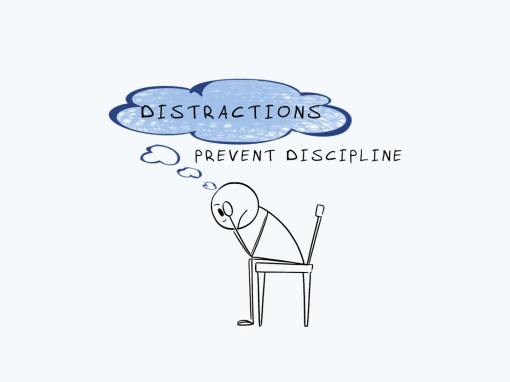Before formal UX training programs were widely available, many people (including me) came to this field from different backgrounds: graphic design, web design, engineering, psychology, medical research, anthropology, academia, and technical writing. And we brought with us the skills we’d learned in those earlier disciplines, collectively making our new field richer by sharing and incorporating the knowledge we’d gained elsewhere.
At first glance, my previous career seems pretty unusual for a transition to UX design. For years, I worked in homeless services in Seattle as a shelter and housing counselor. I served homeless and formerly homeless adults living with serious mental illness like schizophrenia, often compounded by co-occurring medical disabilities or self-medication.
When the economy hit a major downturn in the late 2000s, I decided I needed a change of career. I took advantage of new educational benefits and went back to school to study graphic design. I wanted to be a book designer.
But then something incredible happened. My program added its first-ever UX design class. On the first day, as my instructor discussed the basics of starting with your user and understanding and advocating for them, a lightbulb went off: “Oh! This is just the design version of social work.” Suddenly, my life path made sense.
A few key experiences from social services stayed with me as I transitioned into a UX career, and I’d like to share those with you in hopes they’ll help you see your users in a new way.
UX is a lot like social work
In both UX and social work, the job is to understand people, their unique needs and motivations, and how to connect and communicate with them. And in both roles, the practitioner’s job is to advocate for people who aren’t always able to advocate for themselves.
Social services systems in the US tend to be a network of byzantine bureaucracies designed piecemeal rather than holistically. They’re notoriously difficult to navigate even without a significant mental illness or disability, and people need expert advocates to help them get their needs met.
As UX practitioners, we need to be advocates for our users simply because they’re not in the room when we’re making key decisions on their behalf. The root causes are different, but our role is the same: Provide understanding and accommodation, and make it as easy as possible for our customers to achieve the outcomes they need.
Success can be difficult to measure, so celebrate the small wins
As a social worker, I saw the impact of my work firsthand, every day. Sometimes these wins were huge and measurable: A woman who had lived without a home for decades, consistently refusing housing or shelter, finally agreeing to move into an apartment.
At Indeed, we celebrate major wins like this all the time: A job seeker who’s been out of work for months or even years finally lands a great job.
But most of the time, as a social worker, these wins came in small, unmeasurable increments: A client finally trusted me enough to accept a hot chocolate packet. Another told a joke for the first time in decades. Someone let me cut the dust bunnies out of his hair and wash it for the first time in years.
We didn’t always have a great way to measure progress like that, but it didn’t make these victories any less important.
At data-focused companies, it can be easy to overlook the importance of building trust in small, difficult-to-measure ways. For example, at Indeed, I’m a UX director for the service that recommends job seekers we think will be a great match to employers and vice versa. And we work hard to build user trust with how we explain our recommendations. Or at least we believe this is building trust.
Trust is a difficult sentiment to regularly and reliably measure. But we can’t let this limitation of measurement get in the way of doing the right thing for our users.
We must continue to push our data, matches, and experiences in a trustworthy direction. We can’t forget the big picture: Human beings are frustrated with byzantine job searches and hiring processes, and we can help them.
Overcome assumptions about people and their needs to make more meaningful impact
The clients I worked with in homeless services were considered the most vulnerable within Seattle’s unhoused population. Most had significant co-occurring mental, physical, or chemical dependency conditions. And most were chronically homeless, meaning they’d lived in shelters or slept outdoors for decades.
People made assumptions about my clients, their needs, and their motivations all the time. We’ve all heard the damaging stereotypes about what unhoused people are like or why people are without a permanent residence in the first place.
One of my favorite clients was in her seventies. Let’s call her Gloria, but that’s not her real name. She was a pixie of a woman with dark eyeshadow in big circles around her pale blue eyes and a big, striped sweater.
I saw a lot of mental illness in that time, but Gloria’s intense hallucinations of being tortured were beyond terrifying. She constantly hit herself on her head to try to make them go away. Gloria had been homeless for decades before moving into supportive housing at one of the facilities where I worked.
It was easy for people to make assumptions about her, and about all my clients: That they don’t want to work, that they don’t have families, or good intentions. And if you give them money, they’ll spend it on drugs. To many, they’re lost causes.
We need to continually remind ourselves that people regularly defy our assumptions about them.
What most people couldn’t see was that Gloria was the strongest, kindest person I’ve ever known. As much pain and anguish as she lived with daily, she spent every evening cooking for the women who stayed in the small shelter on the first floor of our building. She looked after them.
She looked after me. I was 25, broke, and trying to figure out my life. We’d sit and talk in the evenings. Gloria told me about the shoes she saw in a store window that day and how she wanted me to have all the best things in life. She’d talk about jazz with a dreamy smile. She never talked about her past, but from off-hand comments about thoroughbreds, antiques, and estates, we guessed she’d had a privileged upbringing.
Two years after I went back to school for design, just before Christmas, I found out Gloria had had a stroke and was in the hospital. I went to visit her and brought gifts. The wonderful nurses there wanted to give her personalized care but didn’t know how because she was no longer verbal. I was able to tell them about her love of jazz, makeup, fine clothes, and antique furnishings. So they played music for her. They painted her nails.
Gloria passed before Christmas, but she wasn’t alone, and she was cared for in a personalized way that was especially important to her.
We need to continually remind ourselves that people regularly defy our assumptions about them.
In homeless services, most of my clients wanted to work but couldn’t hold a job because of their illness or their lack of housing. My clients had families they still had relationships with, but who could no longer care for them, or children from whom they’d been separated. Most had lived in housing for short periods but were quickly evicted because of the behaviors that can accompany schizophrenia.
They needed personalized housing where it was understood that they might shout in the middle of the night, need help with their hygiene here and there, and need vigilant protection from others who could take advantage.
As UX professionals, we’re not helping our users if we’re not standing up and voicing their needs.
At Indeed, we have the opportunity to think about our recommendations in a similar way.
Instead of only showing businesses the profiles of people with perfect resumes who exceed requested qualifications, we help people get jobs by connecting job seekers and employers using more efficient and effective parameters.
Indeed aims to provide helpful, transformational, and ethical experiences that help employers think beyond their assumptions of what the “perfect fit” candidate must look like. Our suggestions intend to broaden the playing field, encouraging employers to become more inclusive about who they hire. And we encourage job seekers to look beyond their own assumptions of what their abilities, helping them see their own strengths in a new light.



